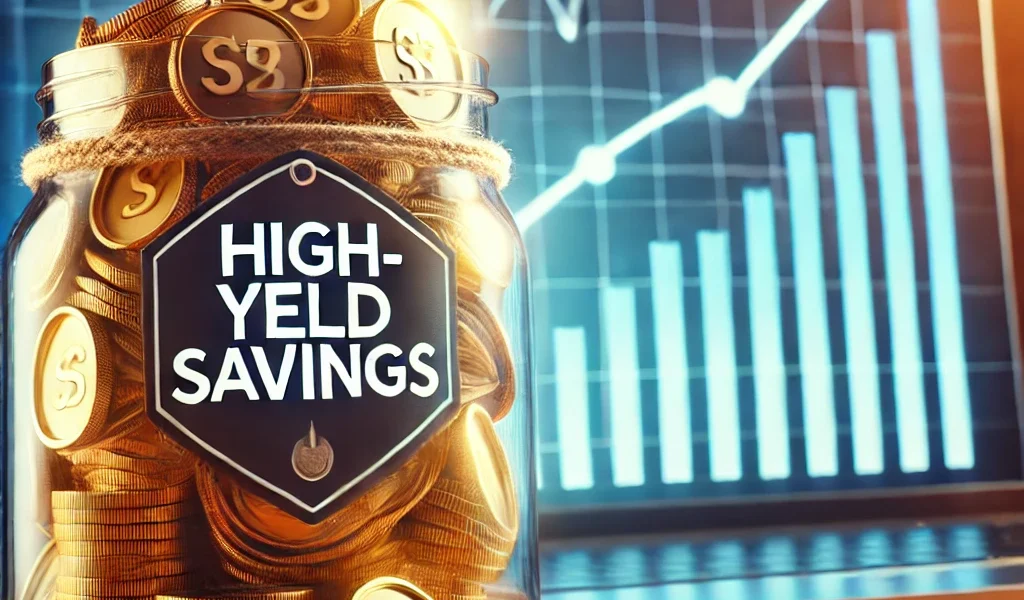Saving money is an essential part of financial planning, and choosing the right high-yield savings account can help maximize your savings. Unlike traditional savings accounts, high-yield savings accounts offer significantly higher interest rates, helping your money grow faster. But with so many options available, how do you decide which account is best for you?
In this guide, we will compare some of the best high-yield savings accounts, their features, benefits, and things to consider before opening an account.
What is a High-Yield Savings Account?
A high-yield savings account (HYSA) is a type of savings account that offers higher interest rates than a regular savings account. These accounts are typically offered by online banks, credit unions, and some traditional banks looking to compete in the digital space.
Benefits of High-Yield Savings Accounts:
- Higher Interest Rates: Earn more on your savings compared to traditional savings accounts.
- FDIC/NCUA Insurance: Most accounts are insured up to $250,000 per depositor.
- Liquidity: Easy access to funds compared to other long-term investment options.
- No or Low Fees: Many HYSAs come with minimal fees and no maintenance costs.
How to Choose the Best High-Yield Savings Account?
When selecting a high-yield savings account, consider the following factors:
- Annual Percentage Yield (APY): Higher APYs mean more earnings.
- Minimum Deposit Requirements: Some banks require a certain amount to open an account.
- Monthly Maintenance Fees: Opt for accounts with no or low fees.
- Withdrawal Limits: Federal regulations typically limit savings withdrawals to six per month.
- Ease of Access: Consider banks that offer mobile apps and online access.
Top High-Yield Savings Accounts in 2024
1. Marcus by Goldman Sachs
- APY: 4.35%
- Minimum Balance: No minimum deposit required
- Fees: No monthly fees
- Features: Easy online transfers, no fees, and strong reputation for customer service.
2. Ally Bank High-Yield Savings
- APY: 4.25%
- Minimum Balance: No minimum deposit required
- Fees: No monthly fees
- Features: User-friendly mobile app, free transfers, and automatic savings tools.
3. Discover Online Savings
- APY: 4.30%
- Minimum Balance: No minimum deposit required
- Fees: No monthly fees
- Features: 24/7 customer support, online access, and strong security measures.
4. Synchrony Bank High-Yield Savings
- APY: 4.40%
- Minimum Balance: No minimum deposit required
- Fees: No monthly fees
- Features: ATM access, online transfers, and high APY.
5. American Express High-Yield Savings
- APY: 4.35%
- Minimum Balance: No minimum deposit required
- Fees: No monthly fees
- Features: Reliable brand, user-friendly platform, and strong security.
How Much Can You Earn?
If you deposit $10,000 into a high-yield savings account with an APY of 4.35%, you could earn approximately $435 per year in interest. This is significantly higher compared to traditional savings accounts, which may offer as low as 0.01% APY.
Are High-Yield Savings Accounts Safe?
Yes! Most high-yield savings accounts are FDIC-insured (for banks) or NCUA-insured (for credit unions), which means your money is protected up to $250,000 per depositor per institution in case of bank failure.
Who Should Open a High-Yield Savings Account?
A high-yield savings account is ideal for:
- People looking to grow their savings safely.
- Emergency fund holders who need liquidity.
- Those who want a separate account for short-term financial goals.
Final Thoughts
Choosing the right high-yield savings account can make a big difference in how fast your money grows. With various options available, consider the APY, fees, and accessibility before making a decision. Whether you go with Marcus by Goldman Sachs, Ally Bank, Discover, Synchrony, or American Express, ensure it fits your financial needs and goals.


